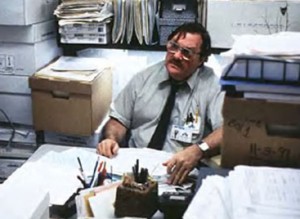 If you’ve ever wondered why the buzzword “innovation” is thrown around so often, it’s because its two biggest results – added value and the change that drives it – are so crucial to business growth. Innovation is the marshalling of resources to create breakthrough value; this process introduces value-driven change into relatively stable systems. Without these two cogs, companies are just spinning their wheels.
If you’ve ever wondered why the buzzword “innovation” is thrown around so often, it’s because its two biggest results – added value and the change that drives it – are so crucial to business growth. Innovation is the marshalling of resources to create breakthrough value; this process introduces value-driven change into relatively stable systems. Without these two cogs, companies are just spinning their wheels.
Innovation isn’t found everywhere, but any company can find ways to create more of it. By introducing little changes to the office, you can develop a powerful atmosphere to foster innovation within your organization.
Understand the current office culture
Social network analysis is a key tool for understanding the “human leverage points” in an organization. While an organizational chart is useful for planning and budgeting, the social network is the way work gets done. An analysis of the social network is what actually helps companies plan strategic and operational actions.
This analysis highlights interpersonal connections and the way information flows throughout the organization. Analysis can be done through observation, by assessing emails, meetings, and other communication patterns, or via an organization-wide survey.
The essence of social network analysis is understanding where everyone fits in the organization: the ones who glue the organization together, the ones with the answers, the ones with the resources necessary to get things done, and the ones who actually get things done. Without this knowledge of your team, it will be hard for your organization to enact any real change.
Create a course of action
Once you understand the role each person plays and how the team fits together, it becomes easier to define a course of action, based on your objectives. Why do you want to innovate? What kind of outcome are you seeking for your company? Do you have an innovation mission that your entire group can rally around? If you don’t know why you want innovation then you will be disappointed with the outcome.
As well as a clear intent, an organization should have a common language for innovation. For example, I use something called design thinking with my clients. It’s human-centric, focuses on the real issues and needs that our customers want addressed, and drives the organization to learn rapidly by testing ideas as soon as possible. However, no one language suits every organization. Figure out what works for you, your team, and your clients.
Tools of innovation
There are some great technologies that help manage innovation processes and support the capturing of new ideas. Like innovation language, no single tool works for everyone. Choosing the most effective technology is dependent on the type of organization you have, as well as what your innovation focus is. Decide what you want your tools to do for you before shopping around.
Generally, I recommend going low-tech. Post-Its™ are great for idea generation—in addition to being mobile, they’re easy to modify, replace, organize, and share. Also, stock up on brown paper to line the walls of your conference rooms. Brown paper is excellent for mapping out business models, social networks, and other larger systems that might be hard to fit on the small screen of a laptop or tablet.
Problems and missteps
One of the problems with many innovation efforts is that the people in charge are operating under the belief that all the ideas need to be captured simultaneously. Organizations that are focused on generating ideas are then stuck with a huge volume of ideas, with no ready way to sort them all out. This prevents organizers from readily acting on their ideas. This can paralyze the organization, and its members will get fed up with the organization’s inaction.
Organizations can also struggle because they are so focused on improving their existing business models that they don’t make room to take risks, fail, recover, and learn. The first mistake unravels them, and they abandon their efforts altogether. The key word here is resilience. Everyone makes mistakes, and learning how to use those mistakes to your advantage is an important step toward taking control.
You’ll never create anything new as an organization if you aren’t willing to do the unexpected every once in a while. Convince your team – and yourself – to take risks in order to move forward. If you don’t innovate, your competitors surely will.
The key is to keep moving. Start small. Focus on one aspect of your business as you learn how to develop an innovation process that works for you, and then grow that process to take bigger risks over time. You’ll never know what you’re capable of until you try.
Andrew C. Marshall [Drew] is the Principal of Primed Associates, LLC, an innovation consultancy. He lives in central NJ and works with clients across the USA and around the world. Prior to founding Primed Associates, LLC, Drew spent ten years with Princeton-based management consulting firm Kepner-Tregoe where he rose to become a Partner and the Chief Innovation Officer. He is a co-host of the weekly innovation-focused Twitter chat, #innochat, the founder, host and producer of Ignite Princeton and a contributor to the Innovation Excellence and Collaborative Innovation blogs. He is also providing support for the implementation of the Design Thinking for Scholars model with the Network of Leadership Scholars (an interest group within the Academy of Management).




